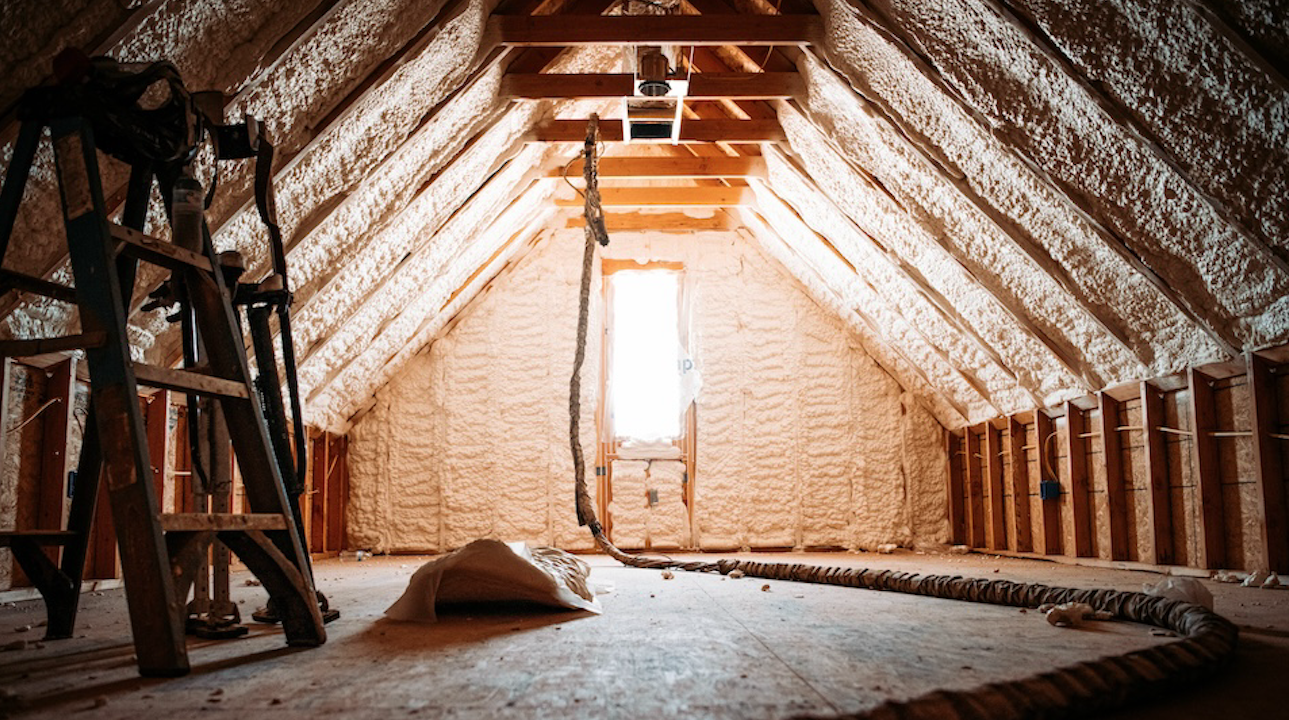You vetted the prospects and screened them for all the red flags you can imagine. You liked them, liked their project, and you ultimately decided to take them on as clients. But what if they’re walking into the relationship thinking their Lexus-type budget for the project will get them an Aston Martin kind of house, with burnished-looking Venetian plaster walls, gleaming Calacatta marble counters, and bleached, wire-brushed hardwood floors—while you bid them for drywall with four coats of finish, granite, and flooring with one coat of stain and three coats of polyurethane? If customers are expecting a higher level of product that is far above what the builder, based on the client’s budget, delivers, the mismatch will result in a bad experience for the buyers and unfavorable reviews for the builder.
Read More
- To learn more about novel ways other custom home builders manage their customers' expectations, check out "Keep Their Dream House From Becoming Your Nightmare"
- How do veteran builders avoid taking on the crazies? see "Vetting Your Clients"
- For recommendations about how builders can get a firmer hold on the reins of the builder/client relationship, look at "The Customer Really Wants You to Be Right"
Setting expectations is an important early phase in what will be a journey of several months to a year—or longer—constructing the client’s dream house. Doing so can create the best possible home construction experience, where clients are engaged, conflicts are minimized and resolved, and builders ultimately delight their customers by meeting and even exceeding expectations.
“Setting expectations is an ongoing process that starts from the first meeting and continues well after the house is finished,” says Donald Farinelli, president of Farinelli Construction, in Mechanicsburg, Pa. “Building a custom home is the ultimate service business because it spans all sorts of disciplines. You’re in sales, you’re estimating, you need a warranty for your product, and you’re doing it all on a level that will be one of the largest purchases that anyone will ever make.”
Building a Dream Home: Seeing Is Understanding
Building a dream home should be fun for customers, but the experience can get bogged down by the process of making all of the product selections and myriad other decisions that can pile up, confuse, and, ultimately, end up preventing the builder and client from being on the same page. One way to keep both parties in sync is to be visual.
Farinelli’s team urges clients to save every image—whether digital or from a magazine—and to stuff it into an idea book or keep it in a Houzz account, then share it with the designers and project managers. “We tell clients to save photos that they think are cool,” Farinelli says, “and to note on the photo what they think is cool. It’s one of the best ways for us to learn what someone is all about.”
Even better, Farinelli says, is to have clients see homes he previously built. John Ricci, president of Ricci Construction Group, in Cheshire, Conn., uses the site walk with clients to not only stake out where the septic, utilities, and sports courts are to be located, but to keep clients excited about what living in their dream home will be like. He’ll talk about how the driveway will be sloped so they can get the best view when they approach the house. He’ll explain how the home will be positioned so the west wind will prevent mold spores from collecting in the structure and how he can deliver for the client who sleeps on the right side of the bed and wants the winter moon shining on her face as she slumbers.
“The winter moon, being able to read by the northern light ... it’s all fun for me, and I don’t find any of it silly. It’s their dream home,” Ricci says. “Having the house positioned where you are taking advantage of all the environmental characteristics is very important. What the glacier did here 2 million years ago is extraordinary. I look at Connecticut as a place that has conditions that don’t exist everywhere, and you have to take advantage of that if you’re really homing in on making this process as wonderful as possible for the client.”
Along with getting his customers excited about their home, Ricci also uses site visits and preconstruction sessions to explain things such as what he’ll do to guarantee a dry basement; how he’ll protect the homeowner’s health by exhausting radon; and why having separate propane lines for the heat/stove and for the generator is a best practice.
“Reviewing that level of detail gives clients a sense of comfort and solidifies their confidence in you,” Ricci says. “You have to explain yourself and do it in a manner where they know you’re looking out for their best interests.”
Clients’ lack of experience and familiarity with the process of building their first house could manifest itself in discontent down the road if they become overwhelmed by all of the decision-making or wonder why custom home construction takes longer than a production-built house. Reminding clients early on that you’re on their side during this long process is part of setting expectations at Carnegie Homes & Construction, in Houston.
“Customers are very excited in the early stages, and that’s when I tell every homebuyer that there is going to be some moment during this process when you’ll want to wring someone’s neck. At some point, you’re going to be frustrated,” says Arpan Gupta, Carnegie’s president. “I’ll say, ‘I want you to remember this (preconstruction) moment and how good we feel right now.’ You’re still dealing with the same people. Whether it was a paint color that needed changing or something didn’t look the way you wanted, we all have the same goal. We’re all good people. We just need to take a step back and find the best solution.”
During preconstruction, Carnegie clients are given a 15-page manual that outlines what happens during each phase of the project and what is expected of them at each stage regarding selections and deadlines. So as not to overwhelm clients, Carnegie breaks up the preconstruction process into several meetings, the first being the introductory session to go over the manual.
“Setting expectations is an ongoing process that starts from the first meeting and continues well after the house is finished.”
— Donald Farinelli, president, Farinelli Construction
“Just like studying for med school, you have to break up studying into multiple sessions because you can’t absorb it all at once,” says Gupta, who changed careers from medical school to home building.
Clients get a preview of the subject matter that will be covered at the next meeting and are provided material so they can prepare for that session, which takes place a week or two later. Some builders urge clients to have all of their selections completed before the foundation is poured, but Gupta believes buyers can be overwhelmed by that approach. Instead, Carnegie handles selections in phases, with one group of features picked before pouring the foundation, another group finalized before framing, and another chosen by the time the drywall arrives.
“We give clients time to walk their home, see how it feels, and how they are going to use it. We get good feedback that way, and people enjoy the process because they don’t feel overwhelmed,” Gupta says. “Five years ago we used to give customers a 20-page selection book and try to go through the whole thing. They’d go through it but wouldn’t feel good about it, and we were getting emails a few days later because they would be second-guessing their choices.”
Anthony DeRosa started a custom home building company in 2008 with a staff composed of just himself and his business partner, both running jobs in the field and managing the office. They were very busy, but the setup worked because clients back then merely signed off on documents and let the architect take care of the details. “It was the nature of things because the meetings were shorter and much easier to navigate,” DeRosa says.
Today clients are more involved. The Internet is an easily accessible well of images and information about new-home construction, architecture, and décor. When buyers see a Pinterest post of a family room, an alcove, or a stairway they like, they demand it. Also, the number of vendors and suppliers for tile, plumbing fixtures, and cabinets has exploded from the handful of outlets and showrooms that existed when DeRosa started building homes, so clients now have more opportunity to see what potentially can be in their dream home and be more hands-on with planning.
Consequently, DeRosa Builders, Anthony’s second and current company, which he co-owns with his brother, Michael, in Greenwich, Conn., staffed up to meet clients’ needs.
“Now we have an office manager who follows the tracking and ordering of supplies and shipments,” DeRosa says. “We have a senior project manager who is at every meeting of each of our the jobs. She helps clients with all the selections and uploads everything into the software. She keeps us organized across the board. We have three or four site guys who stay on site all of the time, watch the progress of the job, make sure the notes from the project manager are being implemented on the jobsite, and ensure we’re staying on schedule.”
Another upgrade involved implementing CoConstruct project management software, which includes a tutorial, so that even clients can use it. Clients receive weekly text message reminders about approaching deadlines and the schedule status. They’ll see the schedule pushed out when rain days occur and receive an alert when the antique finish porcelain bathroom tile they selected is delivered to the jobsite. To approve change orders, they simply sign on their smartphone screen with their finger, and the additional cost is added to the bottom line total for the project.
“We’ve done projects with 80 change orders, and this tool allowed us a lot of freedom, providing easy tracking and also updating the client,” DeRosa says. “We used to have a daily log on the jobsite that the super would sign and note if it was raining or when a delivery arrived. CoConstruct delivers a lot of our bad news—about rain delays and the cost of change orders—and keeps everybody on the same page. Our clients—particularly Millennials—love that they can open their phones and see exactly where they are with their finances, when a payment was made, and the check number. I used to have to reconcile that stuff at the end of a job, and it would take me hours. The tracking is great, and there are far fewer questions, so now we can focus on the build and the quality of the build.”
Delving Deeper to Discover Client Expectations
Look books are part of the process at Hemingway Construction, but clients also are asked to bring images of what they don’t like. Peter Sciarretta, CEO of the Greenwich, Conn., builder, finds that customers often have an easier time articulating what does not appeal to them than they do explaining why they like something. An image of a kitchen or a façade may look great because the lighting was good, but their opinion of that photo doesn’t really reveal details about their preferences for architecture and décor. “The photos of what they don’t like tell me more about what they actually like than does a photo of what they like,” Sciarretta says.

Another method he uses to discover clients’ expectations is asking how they want to grow into their new home. Those answers don’t come by asking, “How big a house do you want? How many rooms should it have, and do you want an open floor plan?” Rather, he’ll ask if they have adult kids whose families will need space to stay, so summer may be more like coming home for them than going on vacation. Do they have aging parents they eventually could take in who will need an accessible bathroom—but one that’s aesthetically consistent with the original construction, not a renovation? He also asks how do they live? What are their hobbies? Is exercise important for them? Do they play cards? Does their daughter take ballet?
Sciarretta meets clients in their current home to see how they live because photos of what they think they like don’t tell the whole story. During one visit, he observed a father and son sitting on the floor playing chess. While touring the children’s bedrooms with another client, he saw playing cards spread out on the edge of a bed as the mom lamented that the family rarely finishes a game because when they take a break for dinner and leave, the cards are disheveled upon their return.
How fantastic an opportunity if a room, a niche, or even an alcove could be dedicated to space accommodating those activities. For the father-and-son chess players, Sciarretta had the architect design a space—with chairs—around the dimensions of a chess board. He accommodated the card and game players by extending out from the family room to add a niche that otherwise would have been a continuation of the exterior wall with windows.
“These are things our clients do every day but never thought they could have a special place for. That’s how I get my custom clients to allow me into their lives and put them into spaces they didn’t even think were on their wish lists,” Sciarretta says. “They thought they just wanted the open floor plan with big windows over the kitchen sink. My favorite part is when, later, the clients send a photo of the father and son playing chess or the daughter using the ballet barre we put in. Those are photos of things we talked about on day two but which the clients never thought would actually be part of their home. Those are the things I try to accomplish as a responsible builder and designer who makes an effort to get on the same page as the client.”
Vision and Reality: Aligning Finish With Budget
Tim Hensley has been building for 33 years and finds that he spends more time today setting client expectations about the project and how both parties will communicate. The president of Hensley Custom Building Group, in Loveland, Ohio, explains up-front that questions and other requests will receive a response within 24 hours. That means a reply won’t always be instantaneous, except in case of an emergency, and will occur during business hours, not at night. Hensley employees will update clients on schedule changes due to weather, selections delays, and subcontractor availability.
To align product expectations with budget, Hensley shows prospects photos of finished homes, including such details as imperfections in drywall, so he can point to and illustrate the different levels of finishes available by price point.
“If you’re delivering one level and the client is expecting another, then somewhere in the preliminary planning or the selections process, you didn’t give the right explanation or make the right promises. That’s one of the things that can lead to disagreements. Setting these expectations up-front has helped,” Hensley says.
Sometimes the vision of the dream house that clients have doesn’t match the reality of what the plan specs say they’re getting or what they intend to spend. Sciarretta recalibrates those expectations by “going back to the basics,” he says. By the third client meeting, he’ll invite the client to go for a drive, during which they’ll visit three Hemingway homes, all with equal quality of construction but with different levels of finishes.
“I’ll say, ‘This house cost X dollars per square foot.’ Then I’ll take them to another house, show it, and tell them, ‘This is Y dollars per square foot,’ and so on,” Sciarretta says. “We’ll stop at three, and I’ll let them see what they get for the money. So then they may say ‘OK, I only wanted to spend X dollars per square foot, and now I understand what X gets me. Now that I understand, I probably want to spend Y because that’s the level of finishes I want.’”
As clients see each house, Sciarretta introduces them to the homeowner and then steps outside so the customers can have a private conversation and ask the owner about what it was like to have Hemingway Construction as the builder.
Change Orders: Helping Custom-Home Clients Understand the Cost
Change orders (COs), depending on how they’re handled, can knock the shared expectations forged between builder and customer during preconstruction out of alignment. “People don’t realize that it really does cost a lot of money to make a change,” Farinelli says. “You have to stop what you’re doing, make the phone calls, get the orders out into the field. It’s almost like doing everything twice.”
All of the builders interviewed for this article say they strive to meet with clients at least weekly so they can show the home’s progress. These sessions are opportunities to answer questions and keep clients excited about their project. They’re also often the time when clients see something they don’t like and want it changed, such as getting a different foyer window instead of the one specified in the plan and already installed. In such cases, Ricci will immediately submit the order for their signature. “If they change it on Monday, the clients get that change order Monday afternoon, and we need a decision no later than Tuesday,” Ricci says. “We like to get paid for the COs as they take place. We don’t tally that up and collect it at the very end.
"If you’re delivering one level and the client is expecting another, then some where in the preliminary planning or the selection process, you didn’t give the right explanation or make the right promises.” —Tim Hensley, President, Hensley Custom Building Group
Change order requests are also an opportunity to educate. If a client wants a knee wall that’s not in the original plan and thinks the change is a small $1,000 framing and finish job, DeRosa sees his role as explaining all that’s involved: buying and installing casing, trim, and a decorative cap, and bringing in a framer, drywaller, painter, and an electrician because code requires an outlet— ultimately showing why the order costs $5,000.
No matter what system is used, quick turnaround and documentation are best practices with change orders. Sciarretta immediately follows an order request with an email to the client briefly outlining the request, the time and date the conversation occurred, and what’s involved to make that change. A price for the change order is submitted for review within 24 to 48 hours. He also sends notes to clients following every phone call and meeting—typically short bullet points that highlight the main items discussed or the meeting’s agenda—shortly after those encounters occurred. “The way to do it is to communicate thoroughly and quickly,” Sciarretta says. “In other words, now, not next week,”
Again, all of the builders we interviewed document the house plan and specs in overabundance by having the client sign off on every selection and decision. The paperwork can be an irrefutable trail of what both parties agreed to, in the case of a later disagreement. And all the builders also acknowledged that they don’t want to beat their clients over the head with the contract. They give in a little.“I do go into every project expecting to give away product,” DeRosa says. “I’m not going to anger a client or take away their dream by fighting over $5,000. We’ll talk about some options, we’ll try to find a solution.”
If a client contracts for 5/8-inch drywall with four coats of finish but then demands walls that feel like glass, Ricci will remind the client of what the contract says but will give a little and perhaps offer to do four rooms on the first floor with Venetian plaster at a 10 percent discount. “You want to show you are willing to bend a bit,” Ricci says. “Clients know that our deal is we are looking out for their best interests because a customer who is happy is a customer who will pay you. If they aren’t happy, collecting your money won’t be so easy.”
Related Stories
Custom Builder
HUD Secretary Marcia Fudge Announces Forthcoming Resignation
U.S. Department of Housing and Urban Development Secretary Marcia Fudge has said that she intends to leave office later this month
Custom Builder
Why Start a Custom Building Business?
In this Taking Care of Business segment, expert coach and trainer Scott Beebe joins our host Duane Johns to talk about where custom builders could be getting off on the wrong foot
Business
Custom Builder to Talk Color Design with Becki Owens at IBS
At this year's IBS, renowned designer Becki Owens will sit down with host James McClister, editor of Custom Builder, to discuss a variety of topics from basic color play in design to the Allura Spectrum palette, a collection of Sherwin-Williams colors curated for the benefit of pros
Business
PERC Highlights Sustainability and Efficiency at IBS with 'Clean Build Conversations'
Hear from industry standouts Matt Blashaw and Anthony Carrino at this hour-long Show Village event
Business
The Five Foundational Cornerstones
Business coach Scott Beebe shares insights into the often ignored business basics that could be the difference between long-term success and failure
Custom Builder
Start With the Why: Fundamentals of the Custom Builder Business
In our inaugural episode of Taking Care of Business, host and custom builder Duane Johns sits down with Scott Beebe, head coach and founder of My Business on Purpose, to talk vision, purpose, mission, values, and more
Business
Why AI Is Now Key to Our Trade Partner Strategy
Thompson Custom Homes Business Manager Erin Day explains how AI became a crucial part of building and maintaining successful trade partner relationships
Business
Defining Outdoor Living in 2024
Residential experts weigh in on outdoor living trends in new report
Business
Thriving in 2024: Tips for Succeeding in an Uncertain Environment
Author and sales expert Mark Richardson shares his insights on the industry and how to rethink your approach to success in the new year
Business
Taking Advantage of Incentives Through Weatherization
Industry insider Kristen Lewis walks us through the basics and benefits of weatherization













